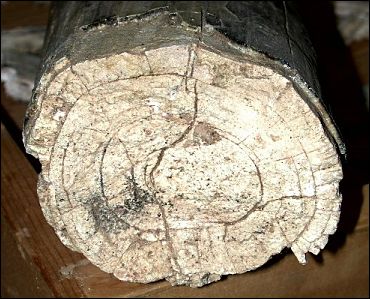

There are three things most people remember about elephants: their huge size, their trunk, and their tusks. The once-numerous elephant types are long since gone as natives of the Chihuahuan Desert, but their bones remain to testify to size and their fossilized tusks to inspire awe.
Magnificent as they are, tusks are just greatly enlarged incisor teeth. Incisors are the teeth at the front of the mouth, and tusks represent the second of these, with the first pair lost evolutionarily ages ago. Fossil tusks of the three families of elephants—mammoths, mastodons, and gomphotheres—found in our area are not uncommon, though usually weathered into numerous fragments.
Where cross sections are visible, concentric rings like those found in tree trunks can be seen. As the tusk grows longer and greater in diameter toward its base, new, reinforcing tooth material is laid down in the elongated, hollow interior. The result is a set of cones, nestled one within another, to form a tool that sometimes exceeds 10 feet in length.
Talk about the potential for a mammoth-sized toothache!

Contributor: Arthur H. Harris, Laboratory for Environmental Biology, Centennial Museum, University of Texas at El Paso.
Desert Diary is a joint production of the Centennial Museum and KTEP National Public Radio at the University of Texas at El Paso.

Cross section of a fossil tusk of Stegomastodon. This species is a member of the Gomphotheriidae, one of three families of the elephant group (Proboscidea) found in the northern Chihuahuan Desert as fossils. This specimen is from El Paso. Photograph by A. H. Harris.